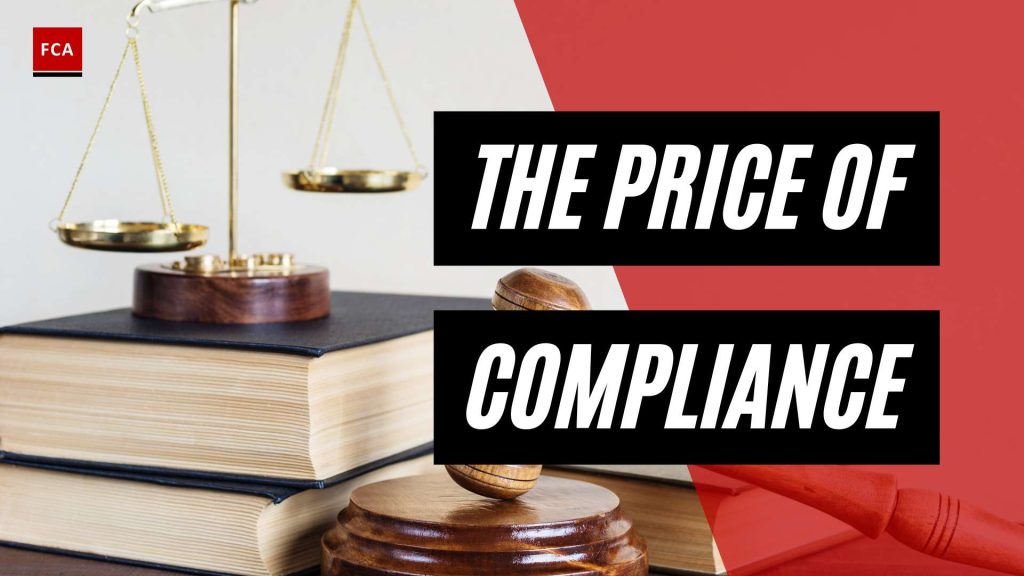AML Regulation and Its Impact on Businesses
The implementation of Anti-Money Laundering (AML) regulations has had a profound impact on businesses across various industries. AML compliance is crucial for businesses to safeguard themselves against financial crime and ensure the integrity of their operations. The importance of AML compliance cannot be overstated, as non-compliance can have significant financial consequences.
The Importance of AML Compliance
AML compliance is essential for businesses to prevent money laundering, terrorist financing, and other illicit activities. By adhering to AML regulations, businesses contribute to the global effort of combating financial crime and maintaining the integrity of the financial system. AML compliance measures include customer due diligence, recordkeeping, risk assessments, and reporting requirements. These measures help businesses identify and mitigate the risks associated with money laundering and illicit financial activities.
By implementing a robust AML compliance program, businesses demonstrate their commitment to ethical business practices, protect their reputation, and maintain the trust of their customers and stakeholders. Compliance with AML regulations is not only a legal obligation but also a responsibility that businesses have in combating financial crime and promoting a secure financial environment.
Financial Consequences of Non-Compliance
The financial consequences of non-compliance with AML regulations can be severe for businesses. Regulatory authorities impose substantial fines and penalties on businesses that fail to meet AML compliance standards. According to the Financial Crime Academy, large banks are reported to spend up to $1 billion per year to maintain regulatory compliance standards. Moreover, global spending on compliance by financial institutions alone is estimated to be more than $100 billion, with smaller firms disproportionately impacted by these costs.
Failure to comply with AML regulations can result in significant financial penalties imposed by regulatory authorities. These fines can average in the millions and even billions of dollars. In addition to financial penalties, non-compliance can lead to reputational damage and loss of customer trust. Businesses may face legal consequences, including potential criminal liabilities, if they do not adhere to AML regulations.
It is important for businesses to recognize the financial risks associated with non-compliance and prioritize AML compliance efforts. This includes investing in AML training and audits to ensure ongoing compliance and mitigate potential financial and reputational risks.
Understanding the importance of AML compliance and the financial consequences of non-compliance, businesses can take proactive measures to establish robust AML compliance programs. By doing so, businesses not only protect themselves from financial crime but also contribute to the overall integrity and security of the global financial system.
AML Compliance Costs for Businesses
Complying with Anti-Money Laundering (AML) regulations comes at a cost for businesses. The expenses associated with AML compliance can be substantial and have significant implications for organizations of all sizes. In this section, we will explore the global spending on AML compliance, the disproportionate impact on smaller firms, and the financial penalties for non-compliance.
Global Spending on AML Compliance
The cost of AML compliance for businesses globally is significant. According to the Financial Crime Academy, large banks reportedly spend up to $1 billion per year to maintain regulatory compliance standards. In 2019, global spending on compliance by financial institutions alone was estimated to be more than $100 billion. These costs encompass various aspects of AML compliance, including staff training, technology investments, implementation of compliance programs, and ongoing monitoring and reporting.
Disproportionate Impact on Smaller Firms
While AML compliance costs affect businesses of all sizes, smaller firms often bear a disproportionate burden. The Financial Crime Academy highlights that the costs associated with compliance can be particularly challenging for smaller organizations with limited resources. These firms may struggle to invest in the necessary infrastructure, technology, and expertise required to meet AML obligations, potentially putting them at a higher risk of non-compliance.
Financial Penalties for Non-Compliance
The consequences of non-compliance with AML regulations can be severe, including substantial financial penalties for businesses. Regulatory authorities impose fines that can average in the millions and even billions of dollars. These penalties act as a deterrent and emphasize the importance of maintaining robust AML compliance programs to mitigate the risk of non-compliance.
To illustrate the potential financial impact, let’s consider some notable cases. In recent years, major global financial institutions have faced significant penalties for AML violations, with fines reaching billions of dollars. These penalties serve as a stark reminder of the consequences that businesses may face for failing to adequately comply with AML regulations.
| Institution | Penalty |
|---|---|
| Bank A | $1.9 billion |
| Bank B | $1.4 billion |
| Bank C | $2.6 billion |
| Bank D | $5.1 billion |
Table: Examples of financial penalties imposed for AML non-compliance (source: Financial Crime Academy)
It is crucial for businesses to prioritize AML compliance to avoid these significant financial penalties, as well as the accompanying reputational damage and potential disruption to their operations.
Understanding the costs associated with AML compliance is essential for businesses. By investing in effective compliance programs, leveraging technology for efficiency, and ensuring proper AML training and audits, organizations can navigate the challenges and mitigate the financial risks of non-compliance. For more information on key components of an AML compliance program, refer to our article on AML regulations and risk assessment for businesses.
Challenges for Businesses in AML Compliance
Complying with Anti-Money Laundering (AML) regulations can be a complex and challenging task for businesses, particularly those operating internationally. In this section, we will explore two key challenges that businesses face when it comes to AML compliance: the complexities of international AML regulations and navigating varying AML requirements.
Complexities of International AML Regulations
Companies operating in multiple jurisdictions must navigate a complex landscape of varying AML regulations. Each country or region may have its own set of rules, guidelines, and reporting requirements, making it challenging for businesses to ensure compliance across borders. The differences in regulatory frameworks can lead to increased compliance costs and challenges for international businesses (Financial Crime Academy).
To address these complexities, businesses should adopt a comprehensive understanding of the AML regulations applicable in each jurisdiction they operate in. This includes staying up to date with regulatory changes, working closely with legal and compliance teams, and engaging with external experts or consultants when necessary. By developing a robust compliance program that accounts for the specific requirements of each jurisdiction, businesses can mitigate the risks associated with non-compliance and streamline their AML efforts.
Navigating Varying AML Requirements
In addition to the complexities of international regulations, businesses must navigate varying AML requirements within a single jurisdiction. Different industries may have specific AML regulations tailored to their unique risks and characteristics. For example, financial institutions, non-profit organizations, and other sectors may have additional compliance obligations and reporting requirements specific to their operations.
To ensure compliance, businesses need to understand the AML regulations relevant to their industry and tailor their compliance efforts accordingly. This includes implementing robust customer due diligence measures, recordkeeping practices, and risk assessment frameworks that align with industry-specific regulations (aml regulations and customer due diligence, aml regulations and recordkeeping for businesses, aml regulations and non-profit organizations (NPOs), aml regulations and risk assessment for businesses). By staying informed about industry-specific AML requirements and continuously monitoring for regulatory updates, businesses can adapt their compliance programs to meet the evolving landscape of AML regulations.
Navigating the complexities of international AML regulations and varying AML requirements within a jurisdiction requires a proactive and adaptive approach to compliance. Businesses should invest in internal resources, technology solutions, and expert advice to ensure they remain compliant with AML regulations. By prioritizing compliance efforts, businesses can mitigate the risks of financial penalties, reputational damage, and disruptions to their operations associated with non-compliance (impact of AML regulations on financial institutions).
The Role of Technology in AML Compliance
In the ever-evolving landscape of AML regulation compliance for businesses, technology plays a crucial role in enhancing the effectiveness and efficiency of anti-money laundering efforts. Automation and data analysis, along with emerging technologies, have revolutionized the way businesses approach AML compliance.
Automation and Data Analysis
Technology has transformed AML compliance by automating processes, analyzing vast amounts of data, and detecting fraudulent activities in real-time. This has improved speed and accuracy while reducing human error in compliance processes. Automated systems can quickly scan and analyze transactional data, customer information, and other relevant data points to identify patterns that may indicate suspicious activities.
By leveraging data analysis techniques, businesses can identify trends, anomalies, and potential risks more efficiently. This enables them to detect and investigate suspicious transactions, monitor high-risk customers, and enhance risk assessments. The use of data analytics and machine learning in AML compliance allows for improved risk assessments, reducing false positives, and focusing resources on high-risk areas (LinkedIn Article).
Emerging Technologies in AML Compliance
The field of AML compliance is continuously evolving, with emerging technologies offering new possibilities for businesses. Some of these technologies include:
-
Blockchain: Blockchain technology provides a secure and transparent platform for financial transactions. It enhances traceability and reduces the risk of fraud by creating an immutable record of transactions. Blockchain can be leveraged to identify and track suspicious activities, increasing the efficiency of AML compliance efforts (LinkedIn Article).
-
Biometric Authentication: Biometric authentication methods, such as facial recognition or fingerprint scanning, are becoming increasingly prevalent in AML compliance. These technologies provide a secure and efficient way to verify customer identities, preventing identity theft and fraud. Biometric authentication enhances the accuracy and reliability of customer due diligence processes (LinkedIn Article).
-
Artificial Intelligence (AI): AI technologies are being utilized to enhance AML compliance by automating processes, analyzing large volumes of data, and detecting complex patterns. AI-powered systems can continuously learn and adapt to new threats, improving the effectiveness of AML compliance programs. These technologies help businesses stay ahead of evolving money laundering techniques and reduce compliance risks.
By embracing these emerging technologies, businesses can streamline their AML compliance efforts, improve detection capabilities, and reduce costs associated with manual processes. It’s important for organizations to stay informed about the latest technological advancements in AML compliance and assess how these innovations can be incorporated into their existing compliance programs.
As technology continues to advance, the role of technology in AML compliance will become increasingly essential. Businesses that effectively leverage automation, data analysis, and emerging technologies will likely experience enhanced compliance outcomes, reduced costs, and improved financial integrity.
Reducing AML Compliance Costs
In the realm of AML compliance, businesses face significant costs to ensure adherence to anti-money laundering regulations. However, there are strategies that can be employed to mitigate these costs while maintaining effective compliance programs. Two key approaches to reducing AML compliance costs include leveraging technology for efficiency and emphasizing the importance of AML training and audits.
Leveraging Technology for Efficiency
Technology has revolutionized AML compliance by automating processes, analyzing vast amounts of data, and detecting fraudulent activities in real-time, improving speed and accuracy, and reducing human error in compliance (LinkedIn Article). By embracing technological advancements, businesses can achieve greater efficiency in their compliance efforts.
One significant trend in AML compliance technology is the use of data analytics and machine learning. These tools enable the analysis of patterns, detection of suspicious transactions, and improved risk assessments, thereby reducing false positives and streamlining compliance processes (LinkedIn Article). Furthermore, the use of blockchain technology provides a secure and transparent platform for financial transactions, reducing the risk of fraud and enhancing traceability to identify suspicious activities (LinkedIn Article). Additionally, biometric authentication, such as facial recognition or fingerprint scanning, is another emerging technology transforming AML compliance by providing a secure and efficient way to verify customer identities and prevent identity theft and fraud (LinkedIn Article).
By leveraging technology, businesses can streamline their compliance processes, reduce manual efforts, and improve overall efficiency. This, in turn, can help reduce the costs associated with AML compliance.
Importance of AML Training and Audits
While technology plays a crucial role in reducing AML compliance costs, it is equally important to invest in AML training and conduct regular audits. A well-trained and knowledgeable workforce is essential for effective compliance. By providing comprehensive AML training to employees, businesses can ensure that their staff understands the regulatory requirements, best practices, and the importance of compliance.
Regular audits are another vital component of an effective AML compliance program. Audits help identify any weaknesses or gaps in the compliance processes and provide an opportunity for remediation. By conducting internal audits or engaging external auditors, businesses can assess the effectiveness of their AML program and make necessary improvements to enhance compliance while minimizing costs.
Internal links to related articles:
- aml regulations and customer due diligence
- aml regulations and recordkeeping for businesses
- aml regulations and non-profit organizations (npos)
- impact of aml regulations on financial institutions
- aml regulations and risk assessment for businesses
- aml regulations and reporting requirements for businesses
By leveraging technology for efficiency and emphasizing the importance of AML training and audits, businesses can effectively reduce their AML compliance costs while maintaining robust compliance programs. This approach not only enhances financial integrity but also contributes to a culture of compliance within the organization.
The High Cost of AML Non-Compliance
When businesses fail to comply with Anti-Money Laundering (AML) regulations, they face significant consequences. The cost of non-compliance can be substantial, both financially and reputationally. In this section, we will explore the two primary aspects of the high cost of AML non-compliance: financial penalties and disgorgement, as well as reputational damage and business disruption.
Financial Penalties and Disgorgement
Non-compliance with AML regulations can result in severe financial penalties for businesses. Regulatory authorities impose fines that can average in the millions and even billions of dollars Financial Crime Academy. The size of these fines varies depending on the extent of the violation, the harm caused, and the jurisdiction.
To illustrate the magnitude of the financial consequences, consider the case of Goldman Sachs. The bank was fined $2.9 billion for its involvement in the 1MDB scandal, which violated AML and corruption regulations Flagright. Such penalties can have a profound impact on a business’s bottom line, potentially eroding profits and affecting shareholder returns.
In addition to financial penalties, businesses may also be ordered to disgorge funds obtained through illicit activities or transactions. Disgorgement adds to the financial burden, as it requires the return of ill-gotten gains Flagright. The cumulative effect of penalties and disgorgement can be detrimental to a business’s financial health, impacting shareholder value and potentially leading to a decline in share prices.
Reputational Damage and Business Disruption
The consequences of non-compliance with AML regulations extend beyond financial penalties. Reputational damage and business disruption are significant outcomes that businesses must contend with.
When a business is found to be non-compliant, its reputation can suffer a severe blow. Loss of customer trust and confidence can lead to a decline in client relationships and potential business opportunities. Rebuilding a damaged reputation takes time and effort, with no guarantee of fully restoring trust. The impact on the business’s brand and image can be long-lasting.
Furthermore, non-compliance may result in the suspension of certain business activities or even the revocation of licenses. These sanctions directly impact a business’s revenue, leading to potential disruption in operations and the loss of key clients or partnerships Flagright. In extreme cases, businesses may face the worst-case scenario of complete closure.
The high cost of AML non-compliance serves as a stark reminder of the importance of implementing robust AML compliance programs. Businesses should prioritize adherence to AML regulations to avoid the financial, reputational, and operational consequences that come with non-compliance. By investing in effective AML measures, businesses can mitigate the risk of penalties, protect their reputation, and maintain the trust of stakeholders.
Key Components of an AML Compliance Program
To effectively combat money laundering and ensure compliance with Anti-Money Laundering (AML) regulations, businesses must establish a comprehensive AML compliance program. This program should encompass several key components that work together to detect and prevent suspicious activities, mitigate risks, and maintain regulatory compliance. The key components of an AML compliance program include:
Detection of Suspicious Activities
A robust AML compliance program should ensure the detection and reporting of suspicious money-laundering activities, such as tax evasion, fraud, and terrorist financing, to the appropriate authorities. This requires the establishment of effective internal money laundering detection systems and controls. Financial institutions need to have mechanisms in place to identify and investigate transactions or behaviors that may indicate potential money laundering activities. Regular monitoring, analysis of transaction patterns, and the use of advanced technologies can assist in the detection of suspicious activities.
Policies and Procedures
Comprehensive policies and procedures are a vital component of an AML compliance program. These policies outline the institution’s commitment to AML compliance and provide specific guidance on how to prevent, detect, and report suspicious activities. They should cover areas such as customer due diligence, recordkeeping, risk assessment, transaction monitoring, and reporting requirements. By establishing clear policies and procedures, businesses can ensure consistency and uniformity in their AML compliance efforts.
Risk Assessments and Internal Practices
Risk assessments play a crucial role in an AML compliance program. They involve identifying and evaluating the risks associated with the institution’s customers, products, services, and geographic locations. By conducting thorough risk assessments, businesses can determine the level of risk posed by different factors and implement appropriate controls and measures to mitigate those risks. Regular internal practices, such as ongoing monitoring and reporting of suspicious activities, are essential for an effective AML compliance program. Financial institutions should establish processes and systems to detect and investigate suspicious transactions, as well as report them to the relevant authorities.
These key components work together to form a robust AML compliance program that helps businesses prevent financial fraud and remain within the regulatory framework. It is essential for businesses to regularly update their policies and procedures, conduct risk assessments, and establish internal practices for ongoing monitoring and reporting of suspicious activities. Independent audits by third-party organizations should also be conducted regularly to ensure the effectiveness of the AML compliance program. By implementing these key components, businesses can enhance their AML compliance efforts and contribute to the prevention of money laundering and other illicit activities.









